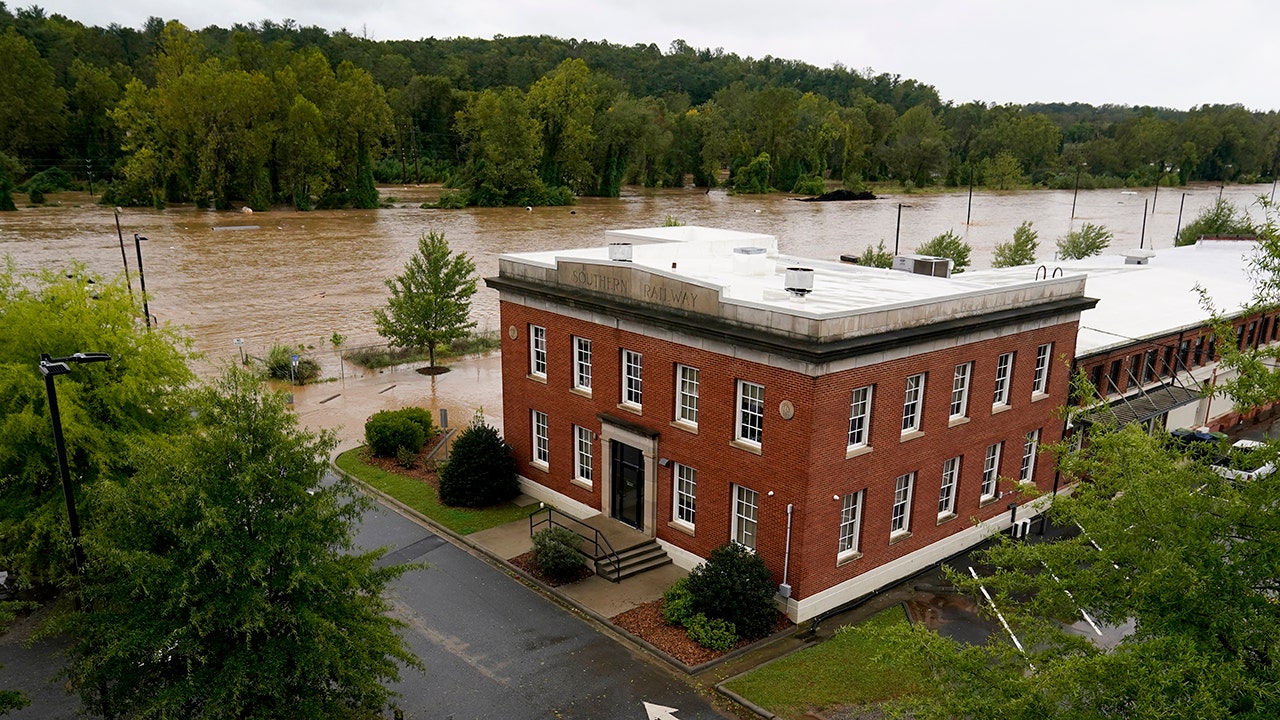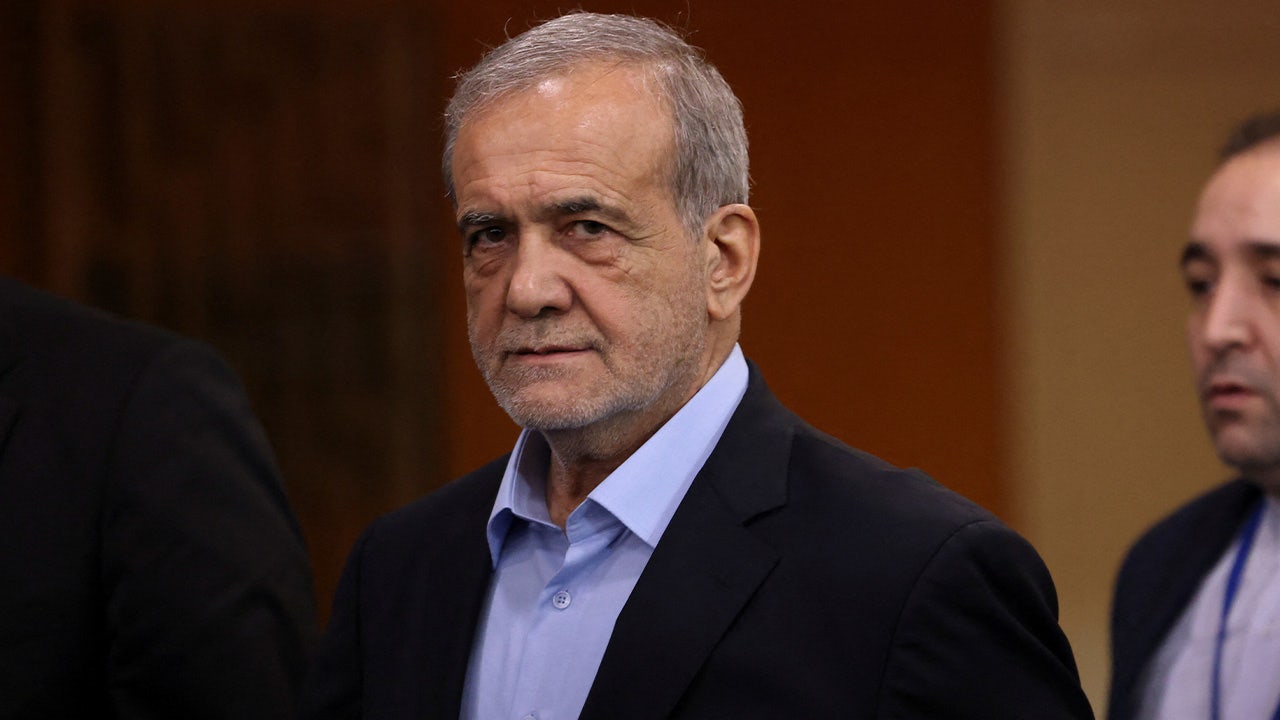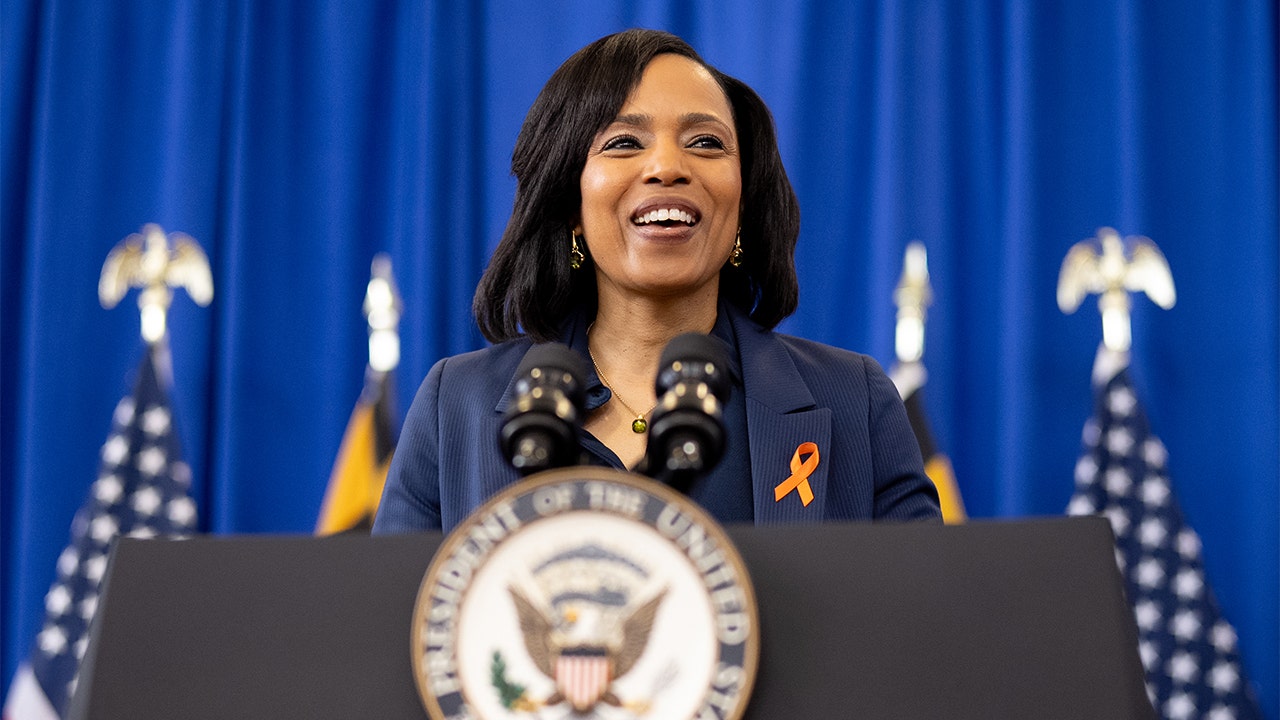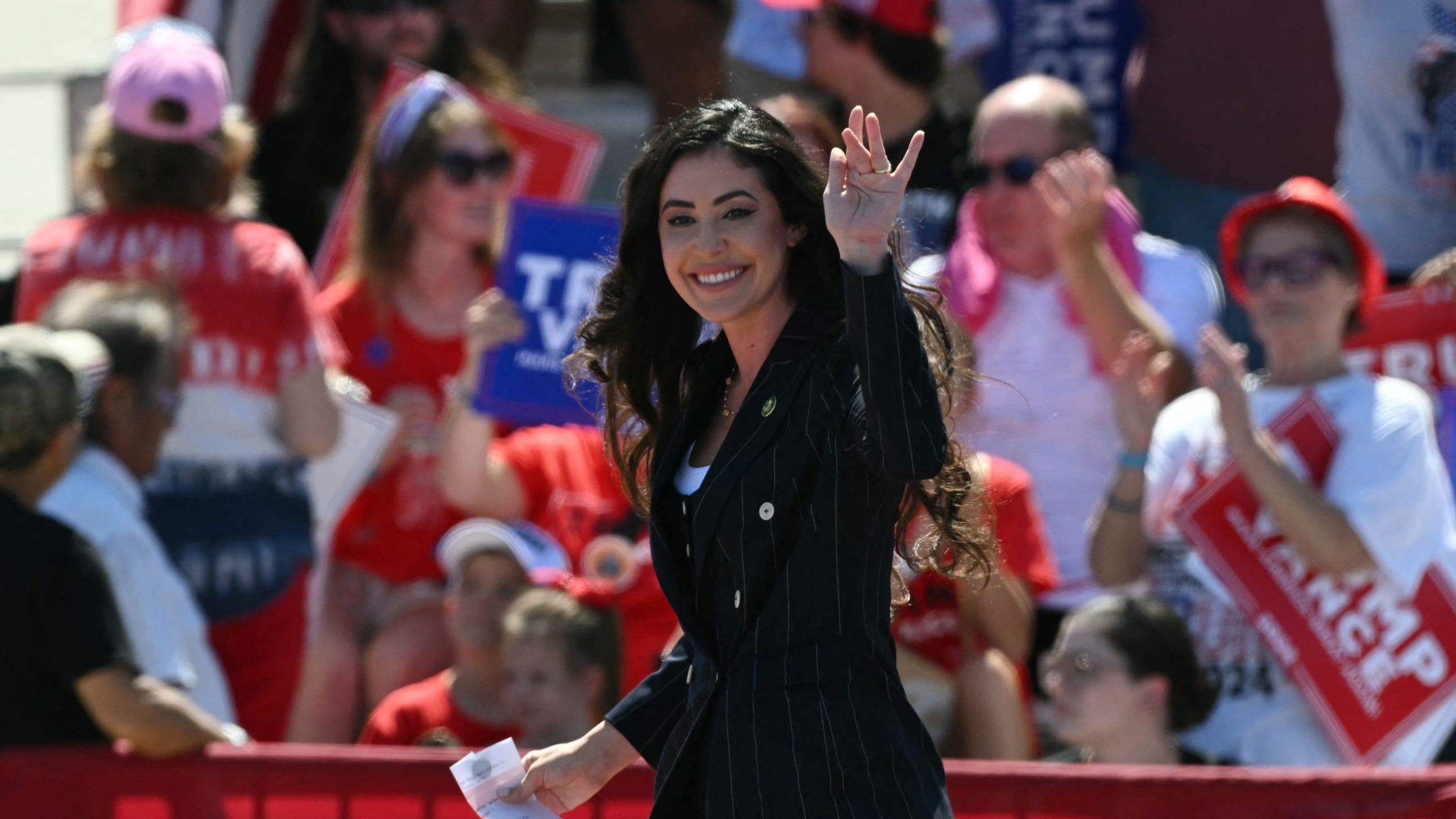Iran’s new president, Massoud Pezeshkian, traveled to the U.S. last week to present a moderate, rational face of the regime to the world.
He claimed in a speech at the United Nations General Assembly (UNGA) that Iran did not want to be a source of instability in the Middle East, and only wanted peace. The president spoke of a “new era of cooperation” with the West and made an overture to engage in nuclear talks.
He scored a meeting with French President Emmanuel Macron on the sidelines of UNGA.
His new government appears eager to improve its relations with European countries. U.N. International Atomic Energy Agency (IAEA) Director-General Rafael Grossi said after meeting with Iran’s foreign minister that he saw an openness from Iran to have meaningful discussions on its nuclear program.
But is it all for show, or is Pezeshkian steering Iran on a path to peace?
Experts say Iran is sending Pezeshkian out to project a moderate front on the global stage – but behind the scenes he holds little power. Supreme Leader Ayatollah Ali Khameini pulls all the strings.
“[Pezeshkian] is a moderate by the standards of Iran… and the fact that the supreme leader let him run and win signals they want a different relationship with the West,” Ambassador James Jeffrey, who led U.S. diplomacy in countries across the Middle East in the Bush, Obama and Trump administrations, told Fox News Digital.
Iran’s last president, Ebrahim Raisi, a member of the conservative popular Front party, died in a helicopter crash on May 19. Pezeshkian, an independent, was elected in July.
NETANYAHU CALLS MIDDLE EAST CONFLICTS CHOICE BETWEEN A ‘BLESSING AND A CURSE’
“Economically, they’re in dire straits, despite the fact we’re not enforcing our sanctions on exporting several millions of barrels of oil a day. He’s been tasked to fix this by calming things with Western states. The problem is he’s not the real leader of Iran.”
Pezeshkian’s visit to the U.S. came as former President Trump revealed he’d been briefed about Iranian plots to kill him after Iran hacked information from his campaign and tried to peddle it to Democrats and the media.
Earlier in the month it was confirmed that Iran shipped ballistic missiles to Russia for use in its war against Ukraine.
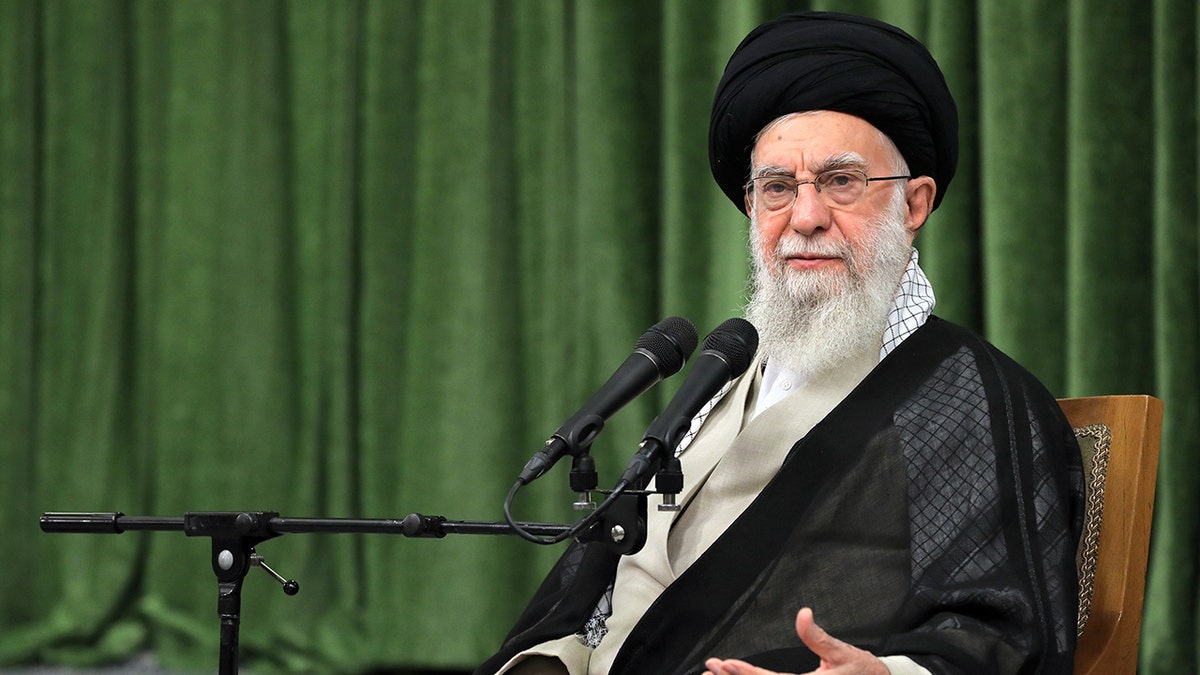
While Iran has long looked to re-engage on a nuclear deal after Trump pulled out of the 2015 Joint Comprehensive Plan of Action (JCPOA), it’s now closer than ever to a nuclear weapon. The nation is enriching uranium at 60% – close to the 90% threshold it needs for a weapon – and reports suggest renewed activity at two nuclear weapon test sites – Sanjarian and Golab Dareh.
“Iran can’t really reverse some of its knowledge that it’s gained by working with advanced centrifuges and higher levels of enrichment,” said Nicole Grajewski, Iran nuclear expert at the Carnegie Endowment for International Peace.
Still, Iran is sure to try to lure the U.S. into lifting sanctions and pursuing diplomatic negotiations.
“We went into this logic hook, line and sinker… in the Obama, and to some degree in the Trump administration, until [Secretary of State Mike] Pompeo took over in mid-2018. We allow these guys to eat our lunch all over the region – in Yemen, in Lebanon and Iraq and Syria.”
“A new president will be tempted in Harris or Trump to try to do a deal with the Iranians, because nobody wants them to get a nuclear weapon, and nobody wants to go to war,” said Jeffrey, who now chairs the Middle East Program at the Wilson Center.

“Pezeshkian might be able to advance and put a smiley face on the Iranian offer, just like the 2015 offer, but it will be one-sided.”
WHITE HOUSE DECLINES TO SAY IF KILLING TRUMP WOULD BE AN ‘ACT OF WAR’
Vice President Kamala Harris was sharply critical of Trump for pulling out of the Iran deal in 2018. President Biden campaigned on returning to the deal, but failed to do so in office.
It’s not clear how actively Trump would pursue a deal with Tehran. Just one day apart, Trump said he would threaten to blow Iran “to smithereens” and would be open to negotiating a nuclear deal.
“As you know, there have been two assassination attempts on my life that we know of, and they may or may not involve – but possibly do – Iran,” Trump said at a campaign event in North Carolina on Wednesday.
“If I were the president, I would inform the threatening country, in this case Iran, that if you do anything to harm this person, we are going to blow your largest cities and the country itself to smithereens,” he added.
But speaking to reporters Thursday in New York City, he said talks are necessary because of the threat of a nuclear Iran.
“Sure, I would do that,” the former president said when asked if he would make a deal with Iran. “We have to make a deal, because the consequences are impossible. We have to make a deal.”
“Trump certainly scares the Iranians more, because he’s unpredictable, but I think one way Trump is predictable is he will not be able to pass up the opportunity to negotiate a deal. It’s what he loves to do. It’s sort of how he brands himself,” said Jonathan Ruhe, director of Foreign Policy at the Jewish Institute for National Security of America (JINSA).
“The same thing always happens – we come in and say, ‘You know, Iran, you better negotiate in good faith this time. We really mean it.’ And then Iran drags out the talks, continues to expand its nuclear program and basically buys time for them to get closer to the bomb.”
Read the full article here






